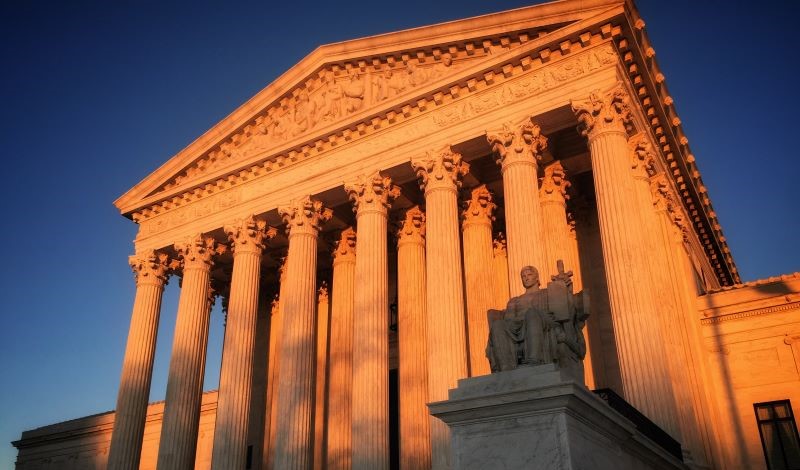
The Trump Administration will struggle to convince courts to uphold the repeal of many agency rules.
In my contribution to The Regulatory Review’s recent series on President Donald J. Trump’s first 100 days in office, I raised many questions that I could not answer about his unprecedented use of direct presidential actions. We will have to wait until the courts address those issues in the scores of cases that are now pending.
Still, there is one important context in which I can make a reliable prediction about the judicial reaction to President Trump’s initiatives—the repeal of agency rules.
President Trump has promised to repeal hundreds of major rules and issued many executive orders directing agencies to do so. Only an agency can repeal a rule.
President Trump has also issued several executive orders that are intended to make it easier for agencies to repeal rules. For instance, he has ordered agencies to invoke the “good cause” exemption from notice-and-comment rulemaking under the Administrative Procedure Act (APA) when an agency determines that a rule is no longer lawful because of an intervening decision by the U.S. Supreme Court. In addition, he has directed agencies to repeal specific rules that he dislikes without providing notice and comment, based on his belief that notice and comment is not required when the President orders an agency to repeal a rule. The President also instructed the U.S. Department of Health and Human Services (HHS) to withdraw its 1971 waiver of the APA’s exemption from notice and comment for rules relating to “public property, loans, grants, benefits, or contracts.”
The law applicable to these actions is well-established. The executive orders are judicially unreviewable because they have no direct effect outside of the executive branch. Every action taken by any agency to implement these orders is subject to judicial review under the APA.
Agencies are likely to have some degree of success in implementing at least some of the actions that President Trump has directed. Courts will uphold HHS’s withdrawal of the waiver of the notice-and-comment exemption, and courts may uphold some of the claims of good cause to avoid notice and comment. That would reduce significantly the time and resources required to repeal some rules.
The result in most cases, however, will be judicial reversal of the agency decision to repeal the rule for another reason: There is a well-established legal doctrine that prohibits an agency from changing its position on an issue without adequately supporting its decision to make the change. That doctrine is based on the duty to engage in reasoned decision-making that courts impose to enforce the ban on arbitrary and capricious actions that applies to all agency actions.
The Supreme Court reaffirmed and applied that prohibition in its unanimous 2025 decision in Food and Drug Administration v. Wages & White Lion Investments. It also reaffirmed the duty to engage in reasoned decision-making in its 2024 decision in Loper Bright Enterprises v. Raimondo—the case in which it overruled Chevron deference, which required courts to defer to reasonable agency interpretations of ambiguous statutes. Courts will not uphold an agency decision to change its position by repealing a rule based solely on a statement such as “the President told me to repeal the rule” or an unsupported assertion that the rule is inconsistent with an intervening Supreme Court decision.
All major rules issued by executive branch agencies since 1981 have been subject to cost-benefit analyses under Executive Order 12,866. This requirement remains in force. Overall, those analyses estimated that the benefits of rules would exceed their costs by several times. Most existing major rules were upheld by reviewing courts years ago.
I do not envy the government lawyer who is assigned the task of trying to persuade a reviewing court that an agency made errors in estimating the costs and benefits of a rule so large that the costs actually exceeded the benefits—let alone trying to persuade a court that it was wrong when it previously upheld the agency action. That effort is highly unlikely to succeed in most cases.
The second Trump Administration is likely to have the same abysmal record as the first Trump Administration in its attempts to repeal rules. The first Trump Administration made only a handful of attempts to repeal rules, and its rate of success in defending those few actions in court was less than 25 percent—far lower than the record of any prior Administration.
It is useful to compare President Ronald Reagan’s remarkable level of success in deregulating the economy with President Trump’s remarkable level of failure. President Reagan was extremely successful when he worked to implement legislation passed in the U.S. Congress on a bipartisan basis—some of it adopted under the Carter Administration—to repeal statutes that authorized agencies to implement counterproductive systems of economic regulation that were hurting the economy. His administration played major roles in implementing the deregulation of railroads, trucking, oil, natural gas, and airlines.
President Reagan was much less successful, however, when he attempted to use agencies to repeal health and safety rules. In that context, his primary contribution to the history of deregulation was the Supreme Court’s famous decision in Motor Vehicle Manufacturers’ Association v. State Farm Mutual Automobile Insurance Company.
President Reagan tried to honor a campaign pledge by having the National Highway Traffic Safety Administration repeal its rule that required the installation of airbags or automatic seatbelts in all cars sold in the United States. In State Farm, the Supreme Court unanimously rejected that action in an opinion that continues to be the largest single obstacle to deregulation. The Court held that an agency must use the same demanding procedures and satisfy the same demanding arbitrary and capricious test when it amends or repeals a rule that it must use to issue a rule.
The bottom line is simple. President Trump will not be able to repeal many rules.




